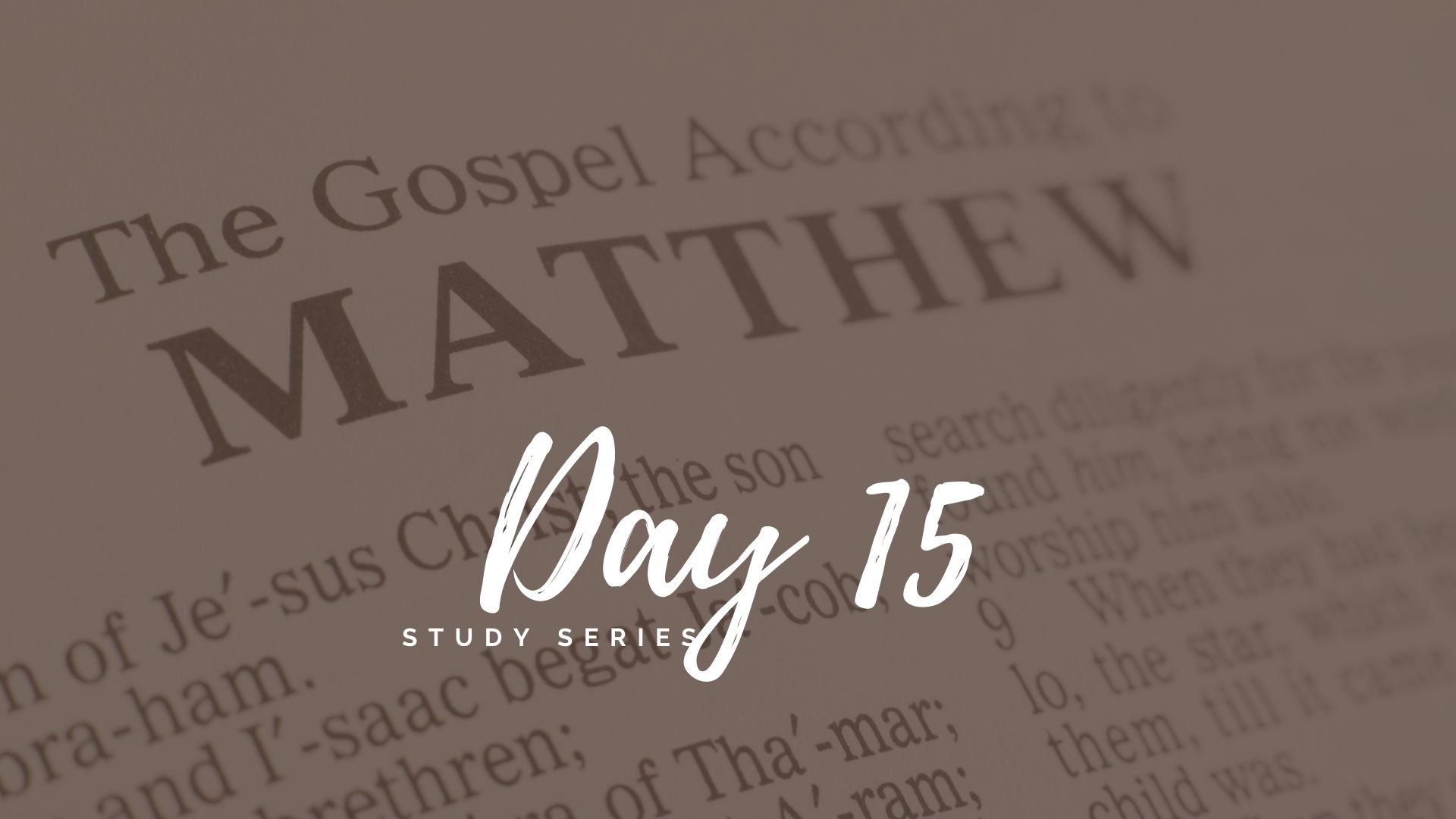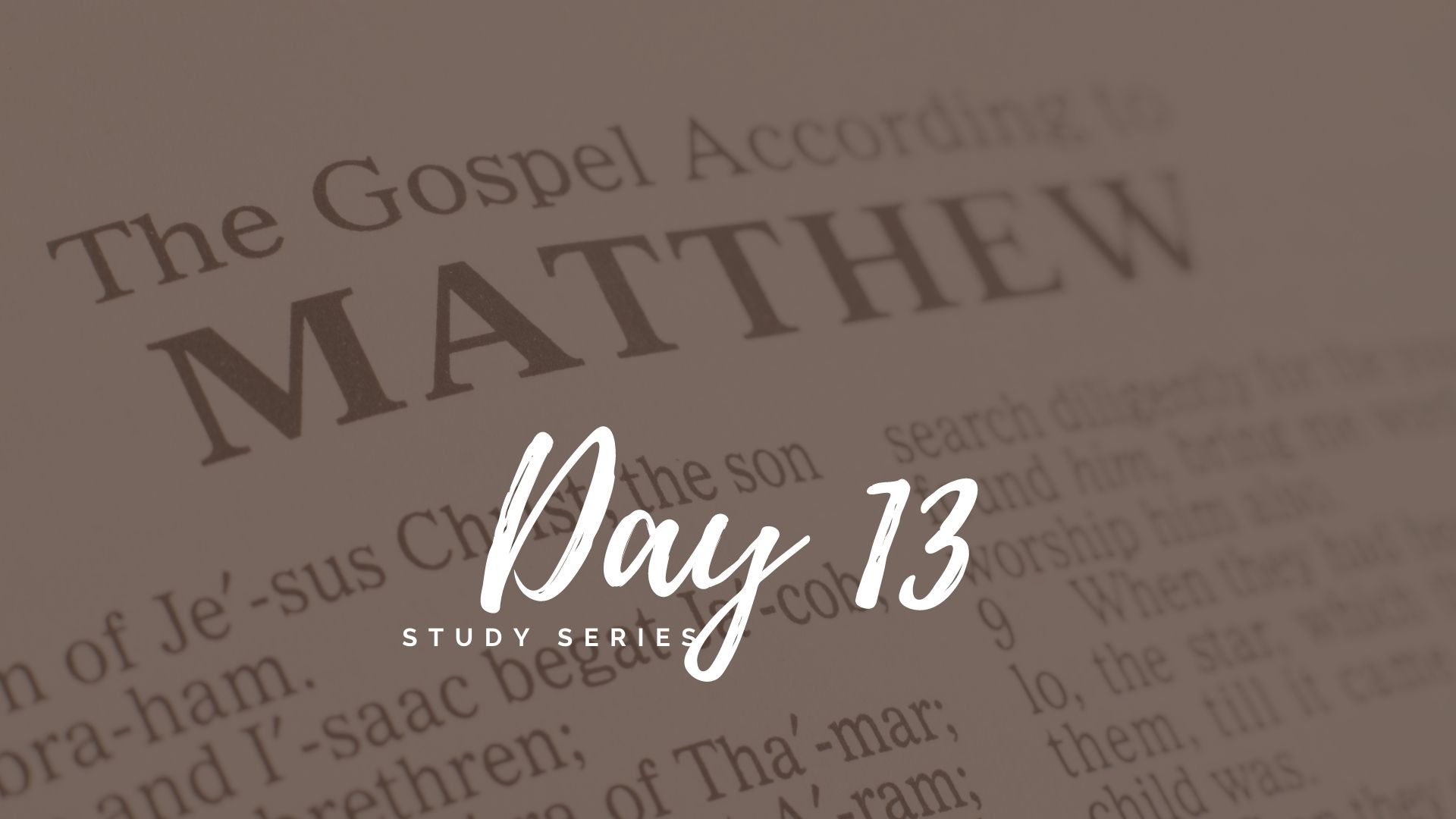Matthew – Day 14 – The Rabbi and His Followers
lease begin by reading the Shema out loud and continue trying to memorize it.
“Hear, O Israel. The LORD is our God. The LORD alone. Love the LORD your God with all your heart and with all your soul and with all your strength. Amen.”
Today we are going to look at the relationship between a rabbi and his followers. Schools were associated with the local synagogue in first century Galilee. Apparently, each community would hire a teacher (respectfully called “rabbi”) for the school. While this teacher was responsible for the education of the village, he had no special authority in the synagogue itself.
The first level of school was for Jewish boys and girls and was called Beth Sefer. “Beth” means “house”. “Sefer” means “book”. So the Beth Sefer was the “House of the Book” or “The Place of Reading”. Children would start at the age of four or five and would continue until the age of twelve.
Just as American children go to school to learn to read and write, Jewish children went to Beth Sefer to learn to read and write – but they learned to read and write scripture. During this time they memorized scripture. The young boys were expected to memorize the Torah, the first five books of the Old Testament, by age twelve. The girls were expected to memorize Deuteronomy, Psalms, and Proverbs by age twelve. Reciting scripture out loud enhanced memorization. This practice was considered to be an important element of learning. (Now you know why we are reading our scripture readings out loud.)
Why did they have to memorize scripture? Most people did not have their own copy of the Scripture so they had to know it by heart or go to the synagogue to look at the village scroll. Sometimes you had to wait for hours to have your time with the scroll (kind of like waiting for the popular book at the library that everyone is wanting to check out)! Meanwhile, you would sit and listen to others read scripture out loud while they were studying the scroll.
When a boy was twelve and had completed the memorization of the Torah, he was allowed to go to the Passover feast and make the sacrifice for his family. This was a great honor and a symbol of manhood.
Read Luke 2:41-42 (out loud).
It appears that Jesus followed the traditional schedule for a young Jewish boy.
Those who did not continue after Beth Sefer included boys who were unable to memorize the Torah adequately and girls who were usually betrothed to be married and would spend several months with their mother learning skills needed to be a good wife and mother. The boys usually entered into the family trade and started work full time.
The second level of study is Beth Midrash, which was also taught by a rabbi of the community. “Midrash” means “explain”. So Beth Midrash was the “House of Explanation”. The best and brightest students who had finished Beth Sefer and had the Torah memorized continued their study at Beth Midrash. Beth Midrash had boys between the ages of 12 to 15 who would go to school while also learning the family trade.
At Beth Midrash they were taught the explanation of the Torah while they began reading and memorizing the rest of the Jewish Bible. Young men would sit and listen to the teachers and ask questions. In traditional teaching style, the teachers would often ask questions of their students.
Read Luke 2:43-52 (out loud).
This is where Jesus first showed exceptional ability – people were “amazed at His understanding and His answers.”
The most outstanding Beth Midrash students would continue their training. They would evaluate different rabbis to find one that they respected and they felt interpreted God’s laws accurately. They would then ask permission to study with a famous rabbi (teacher). This often meant that they had to leave home and travel with the rabbi. They were with the teacher 24 hours a day 7 days a week, for years. The students were called “talmidim” which is what we call a “disciple” today.
We often think about a student being a person who wants to know what the teacher knows, either for a grade or because they are interested in the topic being taught. The actual goal of a talmid (disciple) was to become like the rabbi, to become what the teacher was. The rabbi had the choice of saying “yes” or “no” to the young man’s request to follow him. If he thought that the young man had the potential and the commitment to become like him, then he said, “yes.” If he thought that the young man could not become like him, then he would say “no.” Most were turned down. If accepted, the talmid would study with the rabbi until the age of 30. The talmidim were passionately devoted to their rabbi and noted everything he did or said. His students listened, watched, and imitated the rabbi so as to become like him. Eventually, they would become teachers passing on the lifestyle to their own talmidim.
All rabbis had talmidim. In the next few days, we will find out if Jesus was a traditional Jewish rabbi and what made Jesus’ talmidim unique. But today think about this: Are you a student or a disciple? Do you want to know about Jesus or do you want to be like Jesus? Do you want to “make the grade” or do you genuinely want to know Him? Do your actions and your decisions reflect your heart’s desire?
Source:
Ray Vander Laan – That the World May Know




